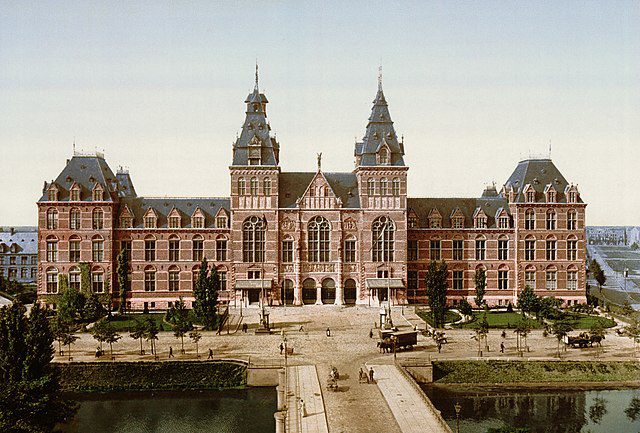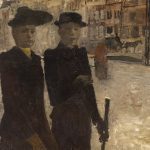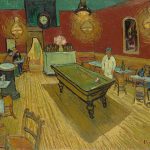
The Rijksmuseum in Amsterdam is one of the most celebrated cultural institutions in the world, embodying the rich artistic and historical heritage of the Netherlands. Founded in 1798, the museum has become a global symbol of Dutch art, showcasing masterpieces that span several centuries. Situated in the iconic Museumplein district, the Rijksmuseum is surrounded by other world-renowned attractions, including the Van Gogh Museum and the Stedelijk Museum, making the area a cultural hub for locals and visitors alike.
The Rijksmuseum’s collection is unparalleled, with over a million objects ranging from fine art to historical artifacts. Approximately 8,000 pieces are displayed at any given time, offering a deep dive into the Dutch Golden Age—a period marked by extraordinary artistic and economic achievement. Its galleries feature iconic works such as Rembrandt’s The Night Watch and Vermeer’s The Milkmaid, which continue to captivate millions of visitors annually.
But the museum is more than just a repository of art; it is a living institution that reflects the dynamic nature of Dutch culture. Its neo-Gothic architecture, designed by Pierre Cuypers, is itself a masterpiece, combining historical motifs with modern functionality. The surrounding gardens, adorned with fountains and sculptures, provide a tranquil retreat for visitors, blending nature with artistry.
Beyond its aesthetic appeal, the Rijksmuseum is a hub for education and public engagement. From family-friendly workshops to cutting-edge exhibitions, the museum fosters a deeper understanding of art and history for people of all ages. Whether you’re an art enthusiast or a curious traveler, the Rijksmuseum offers an experience that is both enriching and unforgettable.
A Brief History of the Rijksmuseum
The Rijksmuseum’s story began in 1798, when it was established as the National Art Gallery in The Hague. Its initial purpose was to preserve and display the most valuable artworks and historical treasures of the Dutch Republic. However, the museum soon outgrew its original location. In 1808, King Louis Bonaparte ordered its relocation to Amsterdam, placing the collection in the Royal Palace on Dam Square.
As the collection continued to expand, the need for a purpose-built museum became evident. In 1885, the Rijksmuseum moved to its current location, a magnificent building designed by Pierre Cuypers. The architect’s neo-Gothic design blended elements of medieval and Renaissance architecture with symbolic references to Dutch history, making the building as culturally significant as the collection it housed. At its core, the Rijksmuseum was envisioned as a space that celebrated the nation’s artistic and historical legacy.
The museum underwent several expansions and renovations over the 20th century, but by the early 2000s, it required a complete overhaul. In 2003, a decade-long restoration project began, led by Spanish architects Cruz y Ortiz. The goal was to modernize the facilities while preserving Cuypers’ original vision. The museum reopened in 2013, unveiling state-of-the-art galleries, improved accessibility, and a stunning central atrium that seamlessly blends old and new architectural elements.
Today, the Rijksmuseum is recognized as a global leader in art preservation and education. Its history reflects the resilience and adaptability of Dutch culture, making it a timeless symbol of the Netherlands’ artistic and historical achievements.
Highlights of the Rijksmuseum’s Collection
The Rijksmuseum’s vast collection is a treasure trove of art and history, offering visitors an unparalleled opportunity to explore the cultural achievements of the Netherlands and beyond. The museum’s centerpiece is undoubtedly its array of masterpieces from the Dutch Golden Age, a period when artists like Rembrandt, Vermeer, and Hals defined the standards of European art.
One of the most iconic works is Rembrandt van Rijn’s The Night Watch. This monumental painting, renowned for its dramatic use of light and shadow, captures a militia company preparing for action. Nearby, visitors can marvel at Johannes Vermeer’s The Milkmaid, a luminous depiction of domestic life celebrated for its intricate detail and masterful use of light.
The museum’s collection also includes Frans Hals’ The Merry Drinker, a lively portrait that exemplifies the vibrant brushwork and expressive character of Dutch portraiture. The Delftware collection showcases exquisite ceramics, featuring intricately designed tiles, plates, and vases that highlight the craftsmanship of 17th-century Dutch artisans.
In addition to its Dutch works, the Rijksmuseum features an Asian Pavilion that houses a fascinating selection of Chinese porcelain, Japanese samurai armor, and Southeast Asian sculptures. These international pieces provide a broader cultural context, connecting the Dutch Golden Age to the global trade networks of the time.
Special exhibitions regularly bring in rare works from other institutions, offering new insights into the museum’s collection and the periods it covers. From ancient artifacts to modern reinterpretations of historical art, the Rijksmuseum’s offerings ensure that every visitor discovers something unique.
The Architecture and Gardens
The Rijksmuseum is an architectural marvel that combines neo-Gothic grandeur with contemporary innovation. Designed by Pierre Cuypers, the building reflects both medieval and Renaissance influences, making it a distinctive part of Amsterdam’s skyline. The exterior features intricate brickwork, statues of historical figures, and decorative reliefs that celebrate Dutch art and history.
Inside, the grand hallways and vaulted ceilings create a sense of awe, while modern renovations have introduced clean, minimalist touches to the galleries. The museum’s atrium, illuminated by natural light, serves as a welcoming space for visitors, blending old and new architectural elements seamlessly.
The gardens surrounding the museum provide a serene complement to its imposing structure. Featuring manicured lawns, seasonal flower displays, and fountains, the gardens are a peaceful retreat for visitors. Sculptures and outdoor art installations further enhance the experience, making the space as dynamic as the museum itself. For those who need a break from exploring the galleries, the gardens offer a perfect place to relax and reflect.
Special Exhibitions and Programs
The Rijksmuseum goes beyond its permanent collection by hosting a variety of special exhibitions that delve into specific themes, artists, or periods. These temporary displays often feature rare works borrowed from other prestigious institutions, offering visitors a chance to see pieces not usually available in Amsterdam.
Educational programs are a cornerstone of the museum’s mission. From guided tours to hands-on workshops, these initiatives cater to a wide range of audiences, ensuring that everyone can engage with art in a meaningful way. The Rijksmuseum app enhances the experience further by providing multimedia tours and in-depth information about the exhibits.
For families, the museum offers interactive programs designed to introduce children to art in an accessible and engaging manner. Scholars and researchers also benefit from the Rijksmuseum’s extensive library, which houses one of the most comprehensive collections of art history texts in the world. These resources make the museum not only a place of preservation but also a vibrant hub for education and inspiration.
Key Takeaways
- The Rijksmuseum is a global cultural treasure located in Amsterdam, showcasing the artistic heritage of the Netherlands.
- Highlights include Rembrandt’s The Night Watch and Vermeer’s The Milkmaid.
- Its neo-Gothic architecture and tranquil gardens enhance the visitor experience.
- Educational programs and special exhibitions ensure accessibility for all audiences.
FAQs
Q: Where is the Rijksmuseum located?
The Rijksmuseum is located in Museumplein, Amsterdam, near the Van Gogh Museum and Stedelijk Museum.
Q: What are the opening hours of the Rijksmuseum?
The museum is open daily from 9:00 AM to 5:00 PM, including holidays.
Q: Are tickets required for entry?
Yes, tickets must be purchased either online or at the entrance. Advance booking is recommended.
Q: Can I take photos inside the museum?
Photography is allowed in most areas but is prohibited in special exhibitions.




